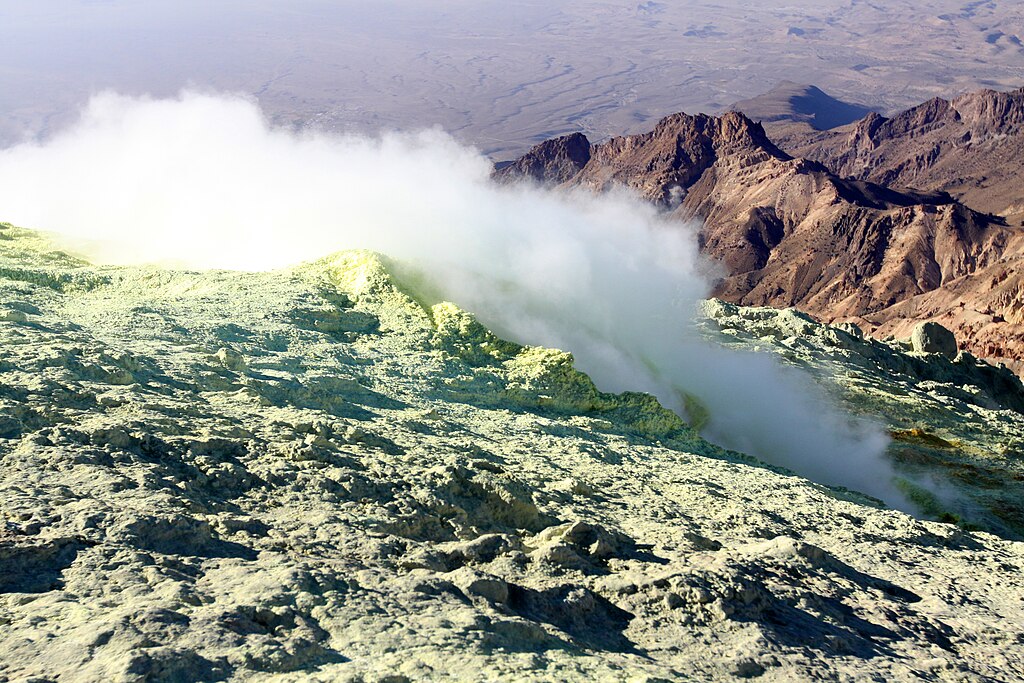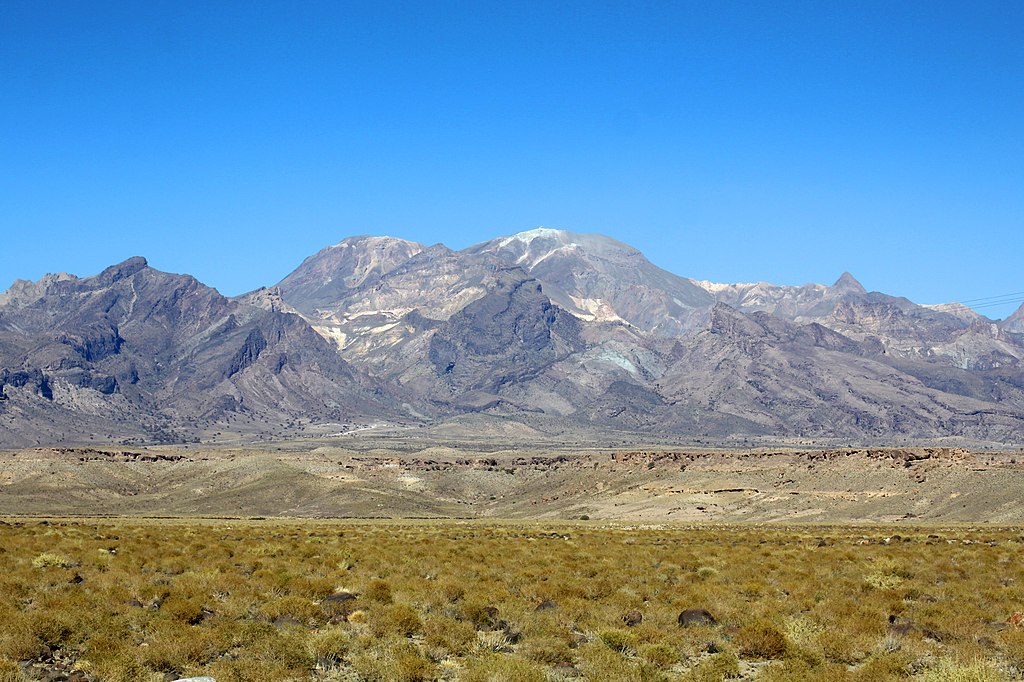Your cart is currently empty!
An Iranian Volcano Awakens After 700000 Years and Reminds Us What It Means to Truly Wake Up

For centuries, Mount Taftan in southeastern Iran was seen as nothing more than an ancient monument of rock and silence. It stood motionless under the heat, its slopes shaped by time, its story seemingly finished. But recently, scientists began noticing something unexpected. The ground near its summit was rising. Slightly. Slowly. Quietly. What was once thought to be extinct was now showing signs of life.

Stories like this remind us how easy it is to mistake stillness for an ending. Sometimes, change does not roar or announce itself; it hums beneath the surface, waiting for the right moment to emerge. The awakening of Taftan is not just about geology. It is about awareness, about paying attention to the quiet shifts that tell us something is happening even when everything appears still.
The Ground That Refused to Sleep
Sometimes the world changes in silence. No headlines, no drama, just a shift so small that most of us would never notice it. That is what happened in southeastern Iran, where researchers studying Mount Taftan saw the ground near its summit rise by almost nine centimeters between July 2023 and May 2024. What they discovered was not noise or destruction, but movement. It was the planet quietly reminding us that even what appears finished is still alive underneath. Scientists from the Institute of Natural Products and Agrobiology in Spain found that gases or magma were pushing upward, creating subtle pressure deep within the rock. Senior volcanologist Pablo González told Live Science, “It has to release somehow in the future, either violently or more quietly.”
That one observation rewrote what many believed about this mountain. For years, Taftan had been called extinct, its fire long gone. But when the data came in, González described it as “a wake-up call to the authorities in the region in Iran to designate some resources to look at this.” It was no longer just a landmark of the past. It was proof that stillness can hide an incredible amount of activity, and that silence often holds the beginnings of something new.

Using satellite imagery from the European Space Agency’s Sentinel 1 mission, researcher Mohammadhossein Mohammadnia found that the uplift could not be blamed on earthquakes or rainfall. The cause was internal. Something inside Taftan was in motion. To scientists, that meant a build-up of gases or a subtle rearranging of magma far below the surface. To the rest of us, it is a quiet lesson about change. Even when the surface looks calm, something deeper is always shifting, preparing to reveal what comes next.
Listening to the Data
What makes science extraordinary is not just what it discovers, but how it teaches us to listen. Every number, every satellite image, every charted line on a graph is a conversation with reality. When scientists study Mount Taftan, they are not simply observing a volcano; they are tracing a dialogue between energy and time. Modern tools like radar interferometry now allow researchers to detect changes in the planet that were once invisible. These discoveries remind us how much of the world operates beyond what our senses can perceive.
The research on Taftan revealed something important about how the Earth communicates. Even the smallest elevation, the faintest change in pressure, tells a story of balance and reaction. The findings from the Institute of Natural Products and Agrobiology in Spain highlighted the need for deeper, continuous monitoring, because patterns like these often precede transformation. As the researchers wrote, “Our study shows that Taftan volcano is more active than previously thought. These findings emphasize the critical need for enhanced long-term monitoring and hazard mitigation strategies at Taftan and other dormant volcanoes with poorly understood activity histories.”
What this study offers is more than scientific insight; it offers perspective. The Earth keeps moving, and the better we measure it, the better we understand ourselves within it. Progress begins with awareness, and awareness begins with paying attention to what was once overlooked. Science gives us the ability to see movement where we once saw stillness and to learn from the signals that rise quietly beneath our feet.

The Cost of Not Paying Attention
Every discovery about the Earth carries a question that turns back to us: what do we do with what we know? The research around Mount Taftan was not a warning of disaster but a reminder that awareness must lead to action. Scientists can observe, measure, and report, but their work only matters if those with power choose to respond. Pablo González called the findings “a wake-up call to the authorities in the region in Iran to designate some resources to look at this.” That statement was not only about one volcano. It was about how easily we forget that prevention is always more valuable than reaction.
Across the world, similar situations unfold quietly. Regions vulnerable to natural activity are often underfunded and overlooked until a crisis makes headlines. Technology has given us the ability to anticipate and prepare, yet preparation often competes with politics, budgets, or denial. The story of Taftan shows how science can only take us halfway. The rest depends on human choice.

In the end, the lesson is simple. Awareness without responsibility changes nothing. The Earth gives us information; it reveals patterns and possibilities. Whether we use that knowledge to build safer systems or continue to ignore it determines not the fate of the planet, but our own.
How Technology Becomes Our Mirror
The study of Mount Taftan is not only a breakthrough in understanding geology but also a reflection of how technology extends human perception. Satellites orbiting far above the planet can now detect movements smaller than the width of a finger. Instruments that measure gases and shifts in rock layers are amplifiers of our awareness, giving form to changes we could never see on our own.
This ability to observe from a distance shows how far curiosity can take us. The same drive that once pushed explorers across oceans now sends data across the sky to help us see the details of our own planet. Yet technology itself carries no intention. It reveals patterns but does not decide what to do with them. The value lies in how we choose to use what we learn. The scientists studying Taftan use these tools to deepen understanding and to prevent future harm, showing that innovation becomes powerful only when it serves awareness.
The more clearly we can see the Earth move, the more we understand that we are connected to its motion. Technology does not replace human insight; it expands it. It teaches us to notice the subtle signals we often miss, to question what we assume is fixed, and to remember that progress begins with the decision to pay attention.
What the Earth Reflects About Us
When scientists study the Earth, they often end up studying human behavior as well. Every discovery about the planet mirrors something about the way we live, how we respond to pressure, and how we handle change. The recent findings at Mount Taftan show that even the quietest systems are constantly adjusting to maintain balance. In many ways, humanity faces the same challenge. We react when things break instead of paying attention to the small shifts that signal something is changing.
The uplift of Taftan’s ground is measured in centimeters, but it represents a much larger idea. It reminds us that awareness is the foundation of prevention. When we ignore early signs, whether in nature or in our own systems, the cost grows with time. The scientists monitoring Taftan do not study movement for curiosity alone; they do it to understand how energy builds and where it may lead. That process is not so different from how we learn to manage the consequences of our own inaction.

If there is a message behind Taftan’s subtle awakening, it is that attention matters. The planet responds to neglect just as our bodies and communities do. Every choice to observe, to measure, and to act responsibly becomes a form of care. Science gives us the ability to see the signs. Awareness gives us the reason to do something about them.
When Knowledge Becomes Action
The story of Mount Taftan is more than a record of geological change. It is a reminder that awareness without action changes nothing. The Earth has always spoken in patterns, data, and motion, and now technology allows us to listen more clearly than ever before. What matters next is how we respond to what we hear.
Every discovery is an invitation to choose responsibility over reaction. The scientists who study Taftan do not search for fear; they search for understanding. Their work shows that progress begins long before an eruption or disaster. It begins in the quiet decision to pay attention, to fund research, to educate, and to act with foresight instead of regret.

The Earth continues to move, and so must we. Each small rise beneath a mountain and each shift beneath the ground is a reflection of movement within ourselves. Awareness is not enough. What defines us is how we use it. When knowledge turns into action, that is when change truly begins.
Featured Image from Safa.daneshvar, CC BY-SA 4.0, via Wikimedia Commons
